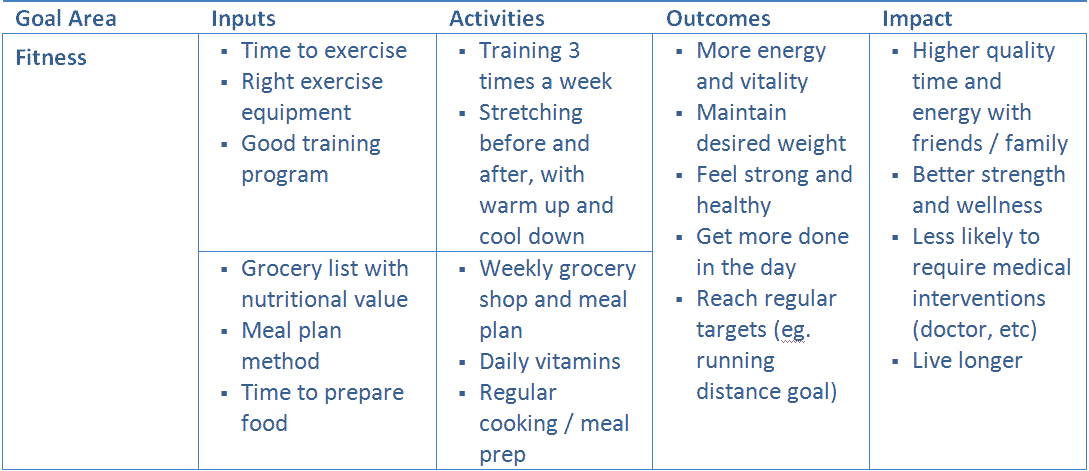Recently I expanded my horizons by attending a non-profit education day titled ‘assessing social impact for NGOs’.
Here’s how I adapted the method I learnt that day for creating goals with long term impact.
Non-profits of all shapes and sizes have two significant tasks. First, how to fund themselves (which often involves requesting grant funding). Second, how to articulate and measure the contribution of their activities in the short and long terms. At the workshop I attended, Dr Gianni Zappalà addressed both of these questions by presenting a simple framework to help non profit organisations articulate positive impact in a single page.
Since that day, I’ve adapted the framework to create short and long term goals. This framework is complementary to other processes, like setting SMART and HARD goals.
The Framework
The original framework consists of these elements:
Rows
■ Stakeholders – the people and organisations that your efforts involve
Columns
■ Inputs – the various resources needed to deliver your activities
■ Activities – the specific elements of the service or product you provide
■ Outcomes – the outcomes which are immediately observable as a result of your activities
■ Impact (short and long term) – the short and long term positive differences which result (entirely or in part) from your activities
Set out on paper it looks like this….

Adapting The Framework For Creating Goals
Here I reframed this method to create goals.
Step 1: Create goal areas
In place of stakeholders, I used ‘goal areas’. Now, these goal areas could be any significant domains in your life.
Example: For the purpose of giving a few areas which will be common to many people, five example goal areas could be Finances, Fitness, Faith, Family, and Friends.
Step 2: List inputs & activities
For inputs and activities, list actions that support your goal areas.
Inputs are the elements (time or materials) you need for an activity. Activities are the regular tasks you will do in pursuit of your goal.
For example, an Input you need toward the goal of ‘fitness’ might be time. An activity might be ‘running once a week’.
Step 3: Check the connection with your goal areas
Check that activities you’ve listed in the preceding step actually support your goal area. Then, check that activities in listed in one goal area don’t distract too much from another goal area.
For example, ‘weekly beer and pizza’ listed in the ‘friends’ goal area, might be a distraction from my ‘fitness’ goals. So, I would to change that to ‘weekly catch up with friends’.
If you wish, you could also assess any activities you define against SMART or HARD principles.
Step 4: Reflect and write the outcomes and impact
List all the positive impacts (short and long term) of the activities.
This is the most powerful step, because it connects you directly with how your activities will create more joy, happiness and fulfilment.
Many goal setting programs leave out this step, which is a real shame 🙁
For example, an outcome of regular running might be more energy and vitality, with a long term impact of living longer.
Here’s an example of the result…


A final thought…
For the last ten years, I’ve studied various personal productivity and time management methods. The value of the framework above is it complements many other methods and connects daily activities with real, positive change in both the short and the long term.
I’ll be adding these 4 simple steps to my toolkit, and hope they benefit you also.












